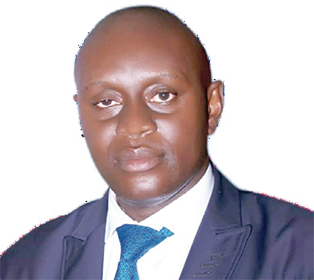Emerging aviation safety and security risk – GPS spoofing

Ekelem Airhihen, a trained mediator, chartered accountant, certified finance and IT consultant, certified in policy and public leadership, and an airport customer experience specialist, has an MBA from the Lagos Business School. He is a member, ACI Airport Non-aeronautical Revenue Activities Committee; and is certified in design and implementation of KPI for airports. He can be reached on ekyair@yahoo.com and +2348023125396 (WhatsApp only)
October 9, 2023665 views0 comments
There are now fresh concerns by international operations and security specialists that aircraft flying near the Iranian border are meeting with fake GPS signals which cause navigation failures. They warned further that this kind of spoofing has not been seen before. They suggested further that many may have come across the spoofing but the pilots did not notice and/or they were protected by the backup systems of their aircraft. One area of concern is that GPS for civil use in general is not encrypted making it easy to take over unlike with the military.
It quickly leads to a complete loss of navigational capability, it is happening over an already high risk area and has the potential of being replicated elsewhere. The bigger challenge is that most crews do not have adequate procedures to deal with GPS spoofing and will be taken aback at the speed with which it quickly impacts navigation systems. When it happens, it in most cases makes the inertial reference system (IRS) unusable, VOR/ DME sensor inputs fail, the aircraft UTC clock fails and crews have had to request vectors from ATC to navigate.
OPS Group, which mapped the GPS spoofing occurrences, issued a “Level 1” risk alert. They made reference to 12 separate reports involving various aircraft as Embraer Praetor 600, Bombardier Challenger 650, Gulfstream G650, and Dassault Falcon 8X and even Embraer 190 and Boeing 737 and 777.
Security specialists have had to explain the difference between GPS jamming and spoofing. In jamming, the signal is interrupted to the degree that it is unusable. However, with spoofing, a false GPS signal is broadcast so that GPS systems indicate false positioning without warning to the pilots. They noted further that this false signal is so strong and has enough integrity such that aircraft systems are fooled so that an aircraft’s IRS is rendered unusable in minutes. It was observed that this spoofing has resulted in up to 80-nm deviation.
The GPS system was developed by the United States Department of Defense in the 1970s and became fully operational in the 1990s. It was designed primarily for military purposes such as navigation, positioning, and timing. When GPS signals became available to the civilian population, GPS technology was broadly applied in many sectors as transportation, navigation, surveying, precision agriculture, and outdoor recreation. However, as GPS signals became popular, incidents of GPS jamming began to take place. They began by accident from unintentional radio frequency interference or atmospheric conditions affecting GPS signals. But in the early 2000s, intentional GPS jamming incidents began to rise.
Possible preventive measures include checking FIR notams for reported spoofing, performing a full IRS alignment if going into an area of elevated risk, ensuring correct time on personal devices that are long term. There are also calls for encryption on GPS for civil aviation as that in the military since the technology exists and also training for “dead reckoning” capabilities especially at night and where an aircraft’s navigation systems are more vulnerable to interference.
GPS technology continues to evolve as well as the methods of jamming. Newer jamming techniques and devices are developed to overtake countermeasures implemented by GPS receivers. So to maintain the integrity and reliability of GPS systems, there is an ongoing battle between jammers and the countermeasures. GPS jamming is illegal in many jurisdictions as a result of its potential for causing harm and disruptions to critical infrastructure. As a result the aviation community should not see it as a challenge for airlines only.
